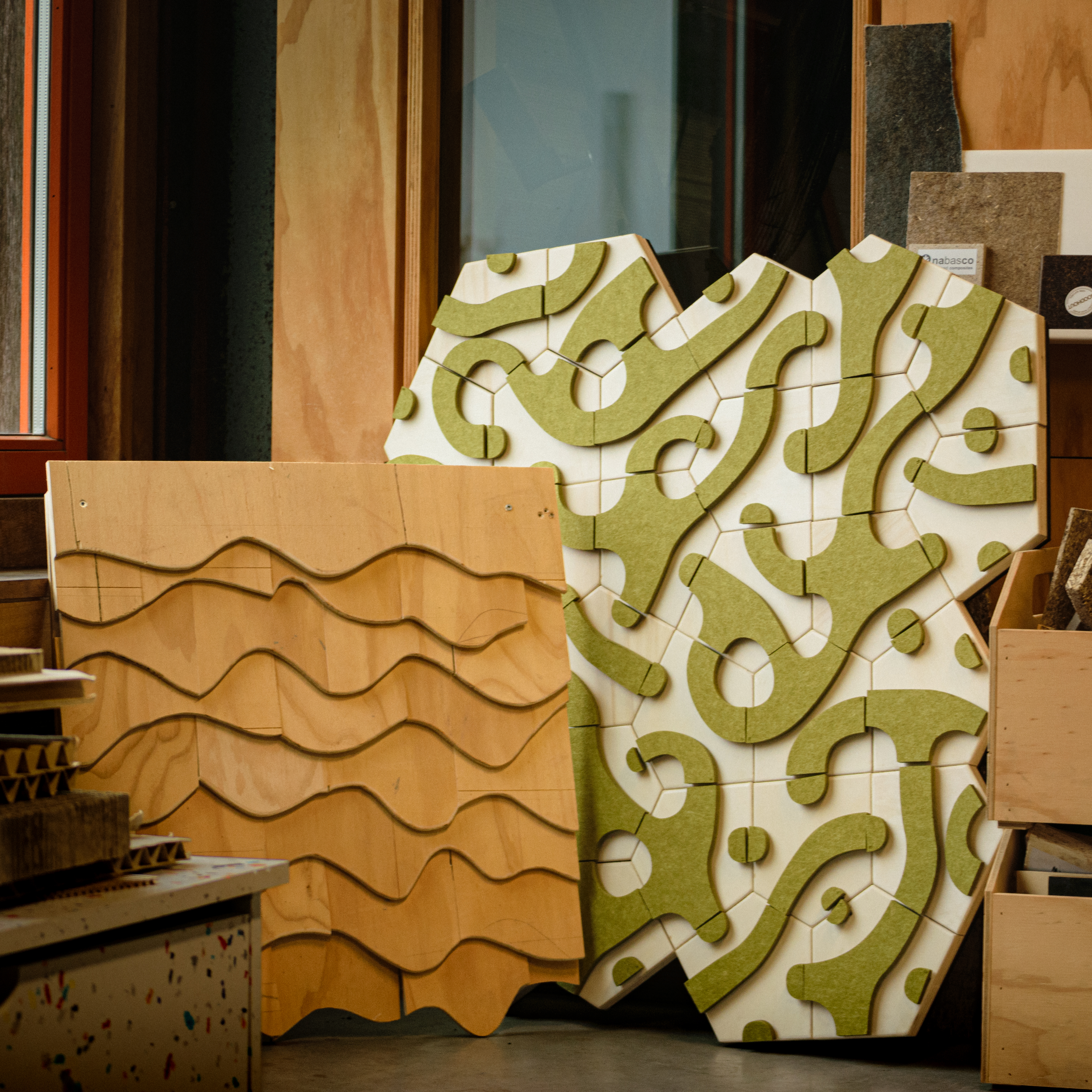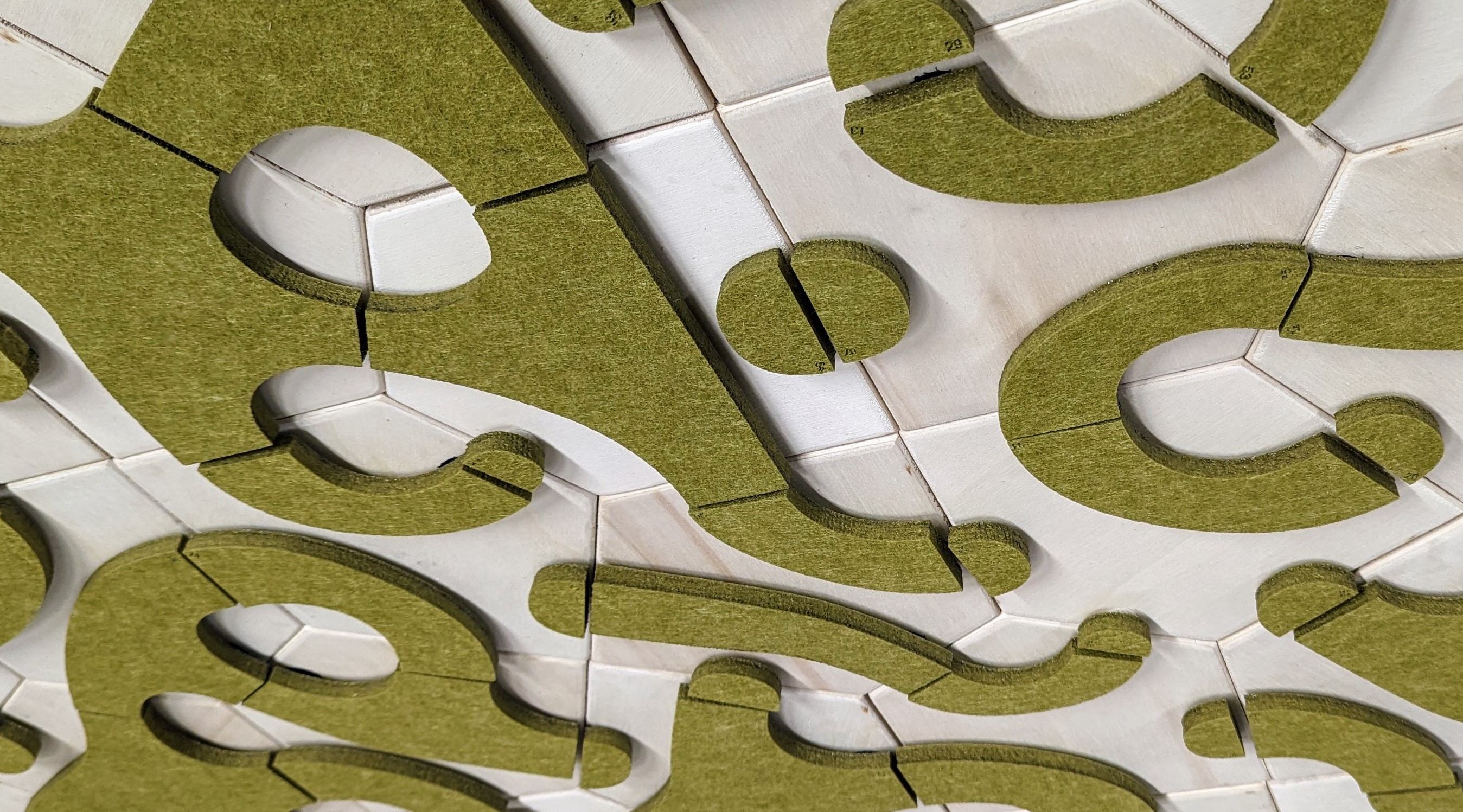

Cutting Out Waste (2024)
Residual plywood tiles, felt (variable sizes)
After Space Explorer, Cutting Out Waste was created as a proof of concept. Cutting Out Waste is based on Cairo and Prismatic pentagonal tiles, which can be tessellated on their own; combined they can form twelve different periodic tilings. The versatility in tile ratios facilitates the creation of diverse tessellations based on the material availability, limiting wood waste as much as possible.
Cairo and Prismatic tilings minimize perimeter when compared to all other tilings using convex polygons with at most five sides and covering the same unit-area. This means that tilings made with these specific pentagons cover the most area with the smallest boundary. This makes the tessellation the most material efficient it can be.
Another advantage of this tiling is that the patterns are purely made by rotating the tiles, so they do not have to be flipped. This means that only one side of the waste material needs to be sanded or treated. The tiles can be made in the three different sizes, which are concluded on a data analysis based on Space Explorer. The maximum diameters of these tiles are essentially 420 mm, 400 mm and 210 mm, as these sizes can be nested most often in the analysed CNC sheets.
The wooden panels were combined with a parametric pattern generated in Grasshopper, made of residual felt. The combination with felt is essential to facilitate acoustic wall covering. This design combines pentagonal wooden panels with a Truchet pattern. This pattern consists of felt parts with two different widths. Following the tiling logic, the parts will always form a continuous pattern.
The attachment of the felt to the wooden panels was facilitated using velcro tape (hook-and-loop fasteners), providing a practical solution for effortless removal and rearrangement to create the possibility of changing the pattern.


All project files are available on my GitHub page.